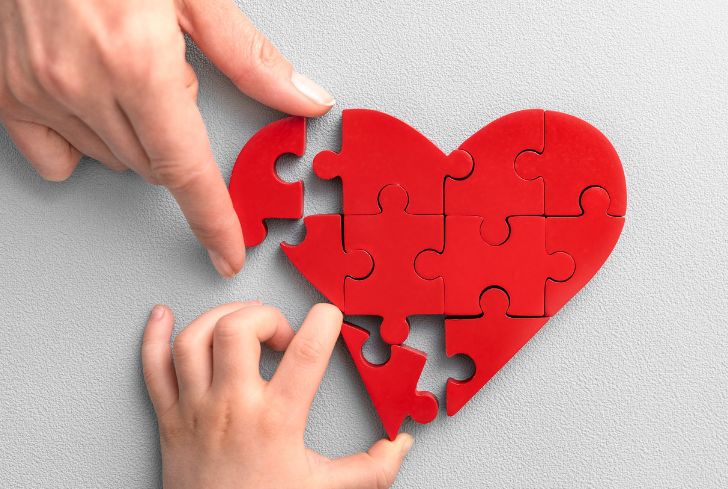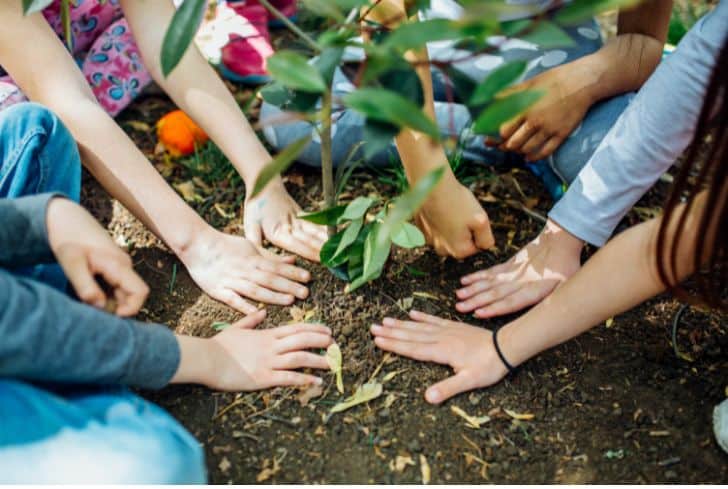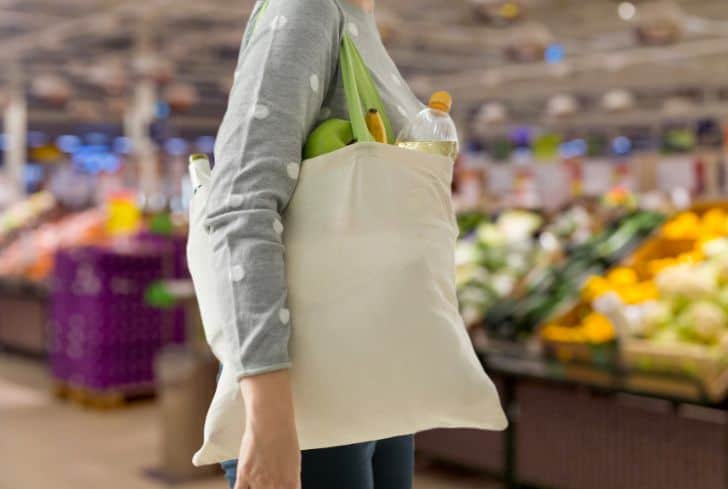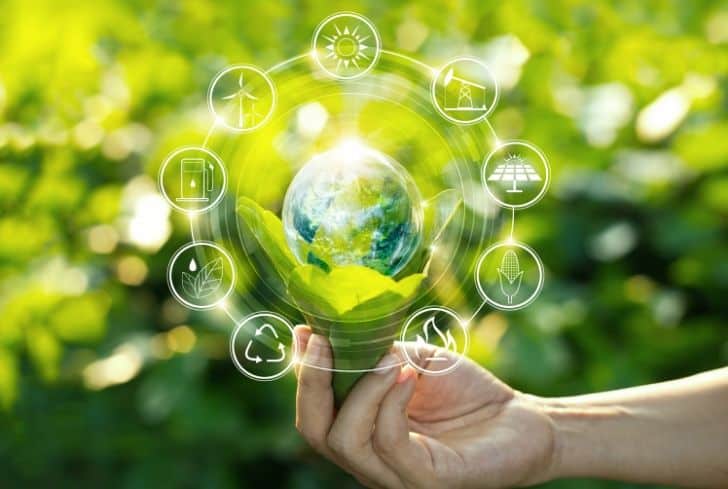There’s a surprisingly high number of people, businesses, and communities that would like to do more to conserve and protect our natural resources, but they don’t know where to begin with becoming more environmentally friendly.
Being environmentally friendly simply means having a lifestyle that doesn’t have any damaging effect on the environment.
And contrary to what most people think, living an environmentally-friendly life isn’t a tasking affair and doesn’t have to involve doing the “big” things to keep the environment safe and sound.
Instead, it’s taking just the small, often overlooked steps towards looking after mother earth to make the planet a better place for our communities and future generations.
A good way would be to start with conserving water, driving less and walking more, consuming less energy, buying recycled products, eating locally grown vegetables, joining environmental groups to combat air pollution, creating less waste, planting more trees, and many more.
According to Wikipedia,
“Environment friendly processes, or environmental-friendly processes (also referred to as eco-friendly, nature-friendly, and green), are sustainability and marketing terms referring to goods and services, laws, guidelines and policies that claim reduced, minimal, or no harm upon ecosystems or the environment.”
Why it’s Important to Become Environmentally Friendly?
You can’t just point toward one business or activity and blame it for all the environmental woes. Keeping the environment clean is an initiative that requires input from everyone in society.
When everyone plays their part well, everything fits together like a puzzle, giving us the earth we all admire to be in.

The more we all do our part – the faster we will create an entire ecology of living that promotes sustainability.
Now, the first step to living an eco-friendly lifestyle doesn’t begin with all those initiatives you may think of. Instead, it begins with understanding the basics of what each part of life can do to positively impact our environment.
Once that’s established, the next step is to start to learn to make different choices on a personal level that help in changing your awareness and consumption of resources. The changes are surprisingly easy to make, but they are multiple and require a high level of discipline.
The Three Distinctive Environmentally Friendly Categories
1. The Environmentally Friendly Business
Becoming an environmentally friendly business isn’t difficult, but it requires a high degree of integrity in all business endeavors, not just how the business handles waste.
Product advertisement and display, waste management, business processes, and everything else pertaining to business operations should be designed to present the business as environmentally responsible.
2. The Environmentally Friendly Community
While businesses play a crucial role in promoting a healthy and sustainable environment, the surrounding community has its part also to play. And in this case, it’s not just about proper waste management or being on board with a good recycling program.
An environmentally friendly community goes beyond that. On top of those efforts, it must also show commitment to the conservation and preservation of resources.
The community should deploy efforts that minimize environmental degradation. Initiatives like using public transportation, green construction, and increased use of renewable sources of energy can make significant changes on the environment.
3. The Environmentally Friendly Person
An environmentally friendly person is a person who moves through life with an awareness of how natural resources are used to create and support the life that they live.
They recycle, conserve water and fuel, and make other choices that not only lessen their negative impact on the environment but also support industries that are working towards being more environmentally responsible.
21+ Easy Ways to Become More Environmentally Friendly
Learning to be more environmentally friendly is easier than you think. In fact, you don’t have to jump in by changing everything.
Instead, start small to make the changes more sustainable and a part of your everyday life.
Here are 21+ ways you can begin to become more environmentally friendly.
1. Become More Aware of Resources
Start by living with greater awareness of the resources that you use in your daily life. Pay attention to what you use and how.
For instance, how do you heat water, travel, or light your home? What products do you use in your home?
These are just a few aspects to consider when embracing an eco-friendly lifestyle.
Awareness is what will allow you to begin then to make environmentally friendly choices.
2. Practice Conservation
With your new awareness of how to use natural resources, practice conservation. It’s no rocket science, either. In fact, it captures very simple things, such as turning off the lights as you leave a room.
But it can also involve big decisions like the materials to use when building a home. Learn more about 15 green home-building techniques here and adopt them in your next construction project.
3. Plant Trees
Trees are necessary for us to survive. They give oxygen, fruits, and shelter to wildlife. They’re also essential for cleaning the air and preventing soil erosion.
A shady landscape around your home can help you reduce energy consumption and keep your home cool even during the summer.
Plant small trees around your home and avoid cutting trees unless necessary and intend to replace them.

Also, you can join hands with local environmental groups to plant more trees and create awareness about the positive aspects of it.
4. Conserve Water
As a resource afforded by nature, water needs to be conserved. You see, much energy is required to pump water from rivers or lakes into your home. Conserving water, therefore, reduces the amount of energy needed to avail it to your home.
A few ways to conserve water are – taking short showers, fixing leaking pipes, keeping the running tap close while you brush your teeth, recycling water in your home, using water-saving appliances, collecting rainwater in a rain barrel to water your lawn, etc.
5. Try Renewable Energy, Go Rooftop Solar
Another way to protect the environment is use renewable sources of energy. Rooftop Solar Photovoltaic (PV) is a perfect example of such an energy source and doesn’t cost much.
In fact, it’s one of the energy sources whose popularity keeps growing exponentially, and that’s because it’s environmentally friendly and doesn’t require much for installation.
6. Change to LED Light Bulbs
Count the bulbs you have in your home. If they’re non-LEDs, change them to LED light bulbs. The latter type has a longer lifespan and is also more efficient in the amount of electricity they use.
In addition, they even come in a wide range of brightness and designs, making them even more convenient to use as you can choose the one that perfectly suits your lighting needs.
7. Cut Down Meat on your Plate
It may not be the best news for meat lovers, but if you want to be environment-friendly, one way to come closer to that is to reduce the amount of meat you consume. It may not have a lot of impact on the environment, but it actually has!
Here, you don’t have to steer clear of it completely. Instead, avoiding it for only 2-3 days a week would even have quite a significant effect on reducing your carbon footprint.
So, “how does eating meat damage the environment?” Perhaps you’re wondering!
Well, it’s simple!
You see, the food we eat is responsible for a whopping one-third of the greenhouse gas emissions on our planet, and meat is just at the top of the list of foods known to emit the highest methane levels.
8. Stop Food Waste
The other effort you’ll need to deploy is to avoid food wastage. It generally isn’t a good practice, especially on a planet where about a billion people sleep on hungry stomachs every day.
But away from that, food waste, similar to meat, emits greenhouse gasses like methane. You can make a huge difference by cooking, serving, or ordering the amount that can actually be consumed and ensuring there is no waste.
9. Change Your Travel Habits
Driving and flying are two areas where you can make a real impact when adopting environmentally friendly practices.
Choose fuel-efficient travel options, travel less, and try the shortest routes to save on fuel. If your office is near your home, walk if possible or ride a bicycle instead of driving.

10. Use Less Fossil Fuel Based Products
Find out what products and consumables you use are made using fossil fuel-based products and processes and minimize their usage and, if possible, avoid them entirely.
11. Buy Locally Grown Products
An easy way to reduce your carbon footprint is to buy locally-grown products. When you shop locally instead of globally, you are actually supporting local dairies and farms and, at the same time, reducing the carbon footprint of transporting goods over long distances.
12. Reduce the Use of Harmful Chemicals
Chemicals like paint, oil, ammonia, and other solutions are hazardous and, when disposed of openly, can cause pollution in the air and contaminate groundwater once they seep into it.
But other than damaging the environment, polluted air, and water can cause severe consequences to human health. As such, they should be disposed of safely.
13. Use Green Cleaning Products
Just in case you didn’t know, you use a lot of cleaning products every day that contain many harmful chemicals that can harm the environment and health alike. So, use green cleaning products made using more natural and organic ingredients.
14. Composting
Composting is a natural process that takes the remains of plants and kitchen waste. This process converts these remains into nutrient-rich food for your plants to help them grow healthy.
But that’s not all — composting also reduces the amount of garbage in landfills, which is good news for the environment.
15. 3 R’s of Waste Hierarchy
Using the 3 R’s (Reduce, Reuse, Recycle) is a clever way to reduce the amount of waste generated and improve overall waste management processes and programs.
Reducing means cutting down on what is produced and what is consumed, while reusing means repurposing items instead of sending them to landfills. Recycling, on the other hand, means turning something into a raw material that can be shaped into a new item.
When you embrace these 3 Rs, you’ll have minimized the manufacturing needed and saved the environment in the process.
16. Choose Personal Hygiene Items Carefully
Be it your toothpaste, body wash, face scrub, or any other product, avoid using the ones that contain microbeads.
Microbeads are small bits of solid plastic that make their way into watercourses and ultimately end up damaging the environment by entering the food chain.
Also, avoid chemicals and opt for natural cleaning products to keep yourself and the environment clean.
17. Buy Recycled Products
When you go out shopping, try to buy products with minimal packaging and those made of recycled materials. You can check the level to see whether it was made from recycled materials or if the use of plastics or chemicals was involved in its production.
Also, where applicable, opt for repair than buying new items. The internet gives access to the tools and information you need to fix practically anything, from batteries to paper to cars.
18. Try Without Plastic
This step may not be the most convenient because plastic plays an important part in our everyday life.
But then, switching from plastic isn’t as tricky as you could be thinking, and that’s because there are plenty of other options.
Consider carrying a canvas bag when shopping at the supermarket or grocery store. It will save the environment, and you may even get a discount for that, depending on where you shop.

Also, minimize using bottled water to reduce the amount of plastic that ends up in our disposal sites.
19. Join Environment Groups
In the environmental conservation campaign, you aren’t alone. Find different environmental groups in your city with whom you can join hands to protect mother earth and make the environment clean.
A quick Google search can help you in finding such groups. You can also pull your friends and relatives and ask them for a helping hand.
20. Stop Littering
One of the familiar sights that we see daily on the streets is seeing people littering on roads.
A great way to keep the environment and the surroundings clean around you is stop people from littering on roads.
Instead, educate them to put trash and garbage in dustbins. The pile of garbage on the street hampers the city’s beauty and pollutes the air.
21. Protect Wildlife
Human activity is leading to the extinction of endangered species and habitats. Protect places like beaches and forests that are habitats for animals. Join hands with the local forest department to protect animal habitats.
22. Educate Others
Educate others about the importance of living an environmentally friendly life. The more people share an awareness of the importance of the environment, the more we can do together to conserve it.








